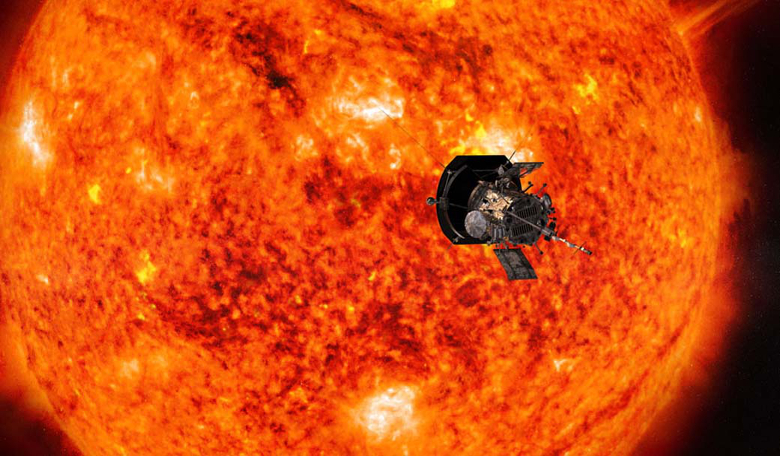Boldly claiming its spacecraft is robust enough to touch the Sun, NASA’s Parker Solar Probe has a lot to live up to, but right now it is on standby ready to launch into the fiery outer atmosphere of the star that makes life possible on our rocky planet.
Named after Eugene Parker, the University of Chicago physicist who first predicted the solar wind’s existence, the solar probe will travel almost 145 million kilometres (90 million miles) to face the scorching heat pouring out from the Sun.
The Parker Solar Probe, which is due for launch tomorrow (11th August, 2018), will whizz around the Sun at an astonishing 700, 000 kilometres per hour (430, 000mph); put another way, if you could reach the same speed on land, you could travel from Philadelphia to Washington D.C., in one second.
The probe will reach its first point of close approach to the Sun on 5 November, after using Venus like a sling shot to give it an extra boost. During this dangerous encounter, it will fly closer to the Sun than any other human-made object. Then, over the next seven years, the spacecraft will get closer and closer to the searing outer layers to get within 6 million kilometres (4 million miles) of the sun’s surface.
At this point, the probe will truly touch the Sun, or at least the tenuous solar plasma that it is made of charged particles (protons and electrons) and can reach temperatures of a few million degrees; a region that is known as the corona.
“We’ll be going where no spacecraft has dared go before — within the corona of a star,” said project scientist Nicky Fox of Johns Hopkins Applied Physics Lab. “With each orbit, we’ll be seeing new regions of the Sun’s atmosphere and learning things about stellar mechanics that we’ve wanted to explore for decades.”
So how will the probe not to burn to a cinder when it faces the brutal heat and high-energy radiation streaming every second from our nearest star? The spacecraft is equipped with a 11.43 centimetre (4.5 inch) thick carbon-composite shield, that should be able to withstand temperatures outside the spacecraft that reach nearly 1,377 celsius (2,500 Fahrenheit).
Providing the heat-shield does its job, the probe is equipped with four instrument suites designed to study plasma, magnetic fields, energetic particles, and image the solar wind.
The Solar Wind Electrons Alphas and Protons investigation, or SWEAP, will gather data on the most abundant particles in the solar wind — electrons, protons and helium ions — and measure such properties as velocity, density, and temperature to improve our understanding of the solar wind and coronal plasma.
The FIELDS instrument suite captures the scale and shape of electric and magnetic fields in the Sun’s atmosphere, while the Integrated Science Investigation of the Sun — ISʘIS, pronounced “ee-sis”— uses two complementary instruments to measure electrons, protons and ions, across a wide range of energies to understand the particles’ life-cycles.
Lastly, the Wide-field Imager for Parker Solar Probe (WISPR) takes images from afar of large-scale structures like coronal mass ejections (CMEs), jets and other ejecta from the Sun. With radiation-hardened Active Pixel Sensor CMOS detectors, the only imaging instrument aboard the spacecraft will also take images of the solar wind before the spacecraft flies through it.
“NASA was planning to send a mission to the solar corona for decades, however, we did not have the technology that could protect a spacecraft and its instruments from the heat,” said Adam Szabo, the mission scientist for Parker Solar Probe. “Recent advances in materials science gave us the material to fashion a heat shield in front of the spacecraft not only to withstand the extreme heat of the Sun, but to remain cool on the backside.”
The exact mechanism by which the corona is heated is still the subject of some debate after many decades, it is therefore hoped that all of the data gathered by Parker will help researchers to revolutionise our understanding of the sun’s outer atmosphere by tracing how energy and heat move through it, while also improving knowledge on the origin and evolution of the solar wind.











